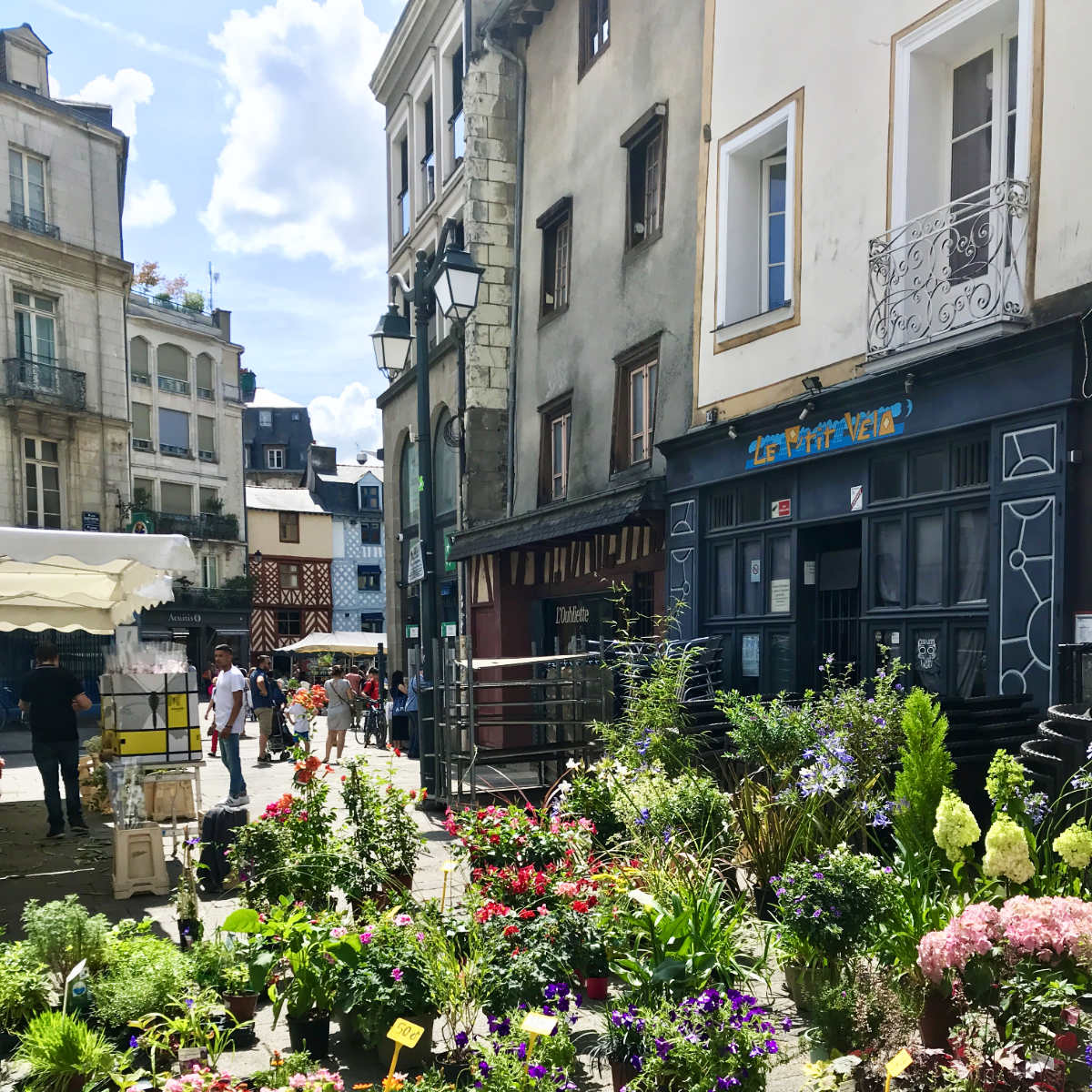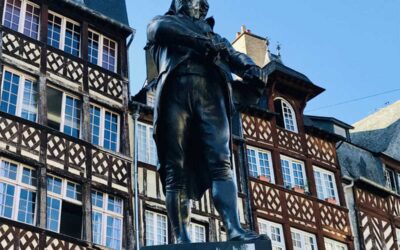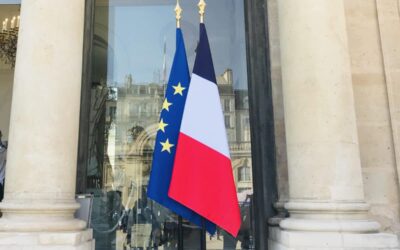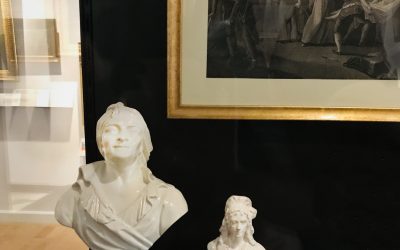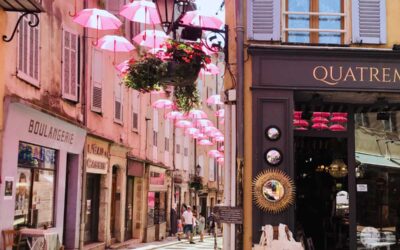Brittany is that enchanting corner of France where the weather can’t seem to make up its mind. Not to mention the fact that the locals speak a 2nd language that is closer to Welsh than it is to French.
Located on the Atlantic coast and the English Channel, Brittany is a region of France that is famous its food, the Celtic culture and its music. If you’re wondering about this charming land of Breton crêpes, Celtic traditions, and an excessive love for cider, you’ve stumbled into the right place.
The joke in Brittany is that it is the land where you can have sun, rain, and clouds all in one day. It is a region with a long maritime history, leading to a mix of cultural heritage and cuisine.
With its many islands, rocky coast, long beaches and historic old towns, Brittany manages to be remote and yet attract a lot of visitors. So let’s explore some of the most interesting facts about Brittany and its people, shall we? Allons-y!
- 1. It is considered one of the 6 Celtic nations.
- 2. It used to be called Armorica.
- 3. Brittany historically was referred to as "Little Britain".
- 3. It has its own flag.
- 4. People used to speak a language called Breton.
- 5. Key figures
- 6. Its capital city is Rennes.
- 7. It is famous for its Breton shirt.
- 8. It still celebrates Halloween.
- 9. It is in the shape of a peninsula.
- 10. Its coastline has the world's 2nd largest tidal range.
- 11. It has a lot of seafood delicacies.
- 12. Some Breton nobles helped William, the Duke of Normandy, conquer England.
- 13. Anne of Bretagne was twice crowned Queen of France.
- 14. It was forced to join France in 1532.
- 15. Several pirates' dens used to operate from the coastline of Brittany.
- 16. Jacques Cartier set sail to the new world from here.
- 17. In France, it is notorious for its windy and rainy weather.
- 18. It had its own parliament until 1789.
- 19. The Bretons consider Mont Saint Michel to be part of Brittany.
- 20. The largest city is Nantes.
- 21. It is known for its crêpes, called galette bretonne.
- 22. There are 5 large islands off its coast.
- 23. Brest is the westernmost port of France.
- 24. "King Arthur” may be inspired from a legend of Brittany.
- 25. Street signs in Brittany are often translated into Breton.
- 26. Many Bretons crossed the Atlantic to support the American War of Independence.
- 27. The city of Quimper in Brittany helped finance the Statue of Liberty.
- 28. The Festival Interceltique attracts many visitors every year.
- 29. Unlike other regions of France, Brittany is not known for its wines or cheeses.
- 30. Breton's bonnets rouge have a long history of protest.
- 31. It has a nationalist movement seeking independence from France.
1. It is considered one of the 6 Celtic nations.
The Celtic league officially recognizes 6 Celtic nations, of which Brittany is one. The six regions widely considered Celtic nations, with strong ties to Celtic culture and language are:
- Brittany (known as “Breizh”)
- Cornwall (known as “Kernow”)
- Ireland (known as “Éire”)
- Scotland (known as “Alba”)
- Wales (known as “Cymru”)
- Isle of Man (known as “Mannin”, or “Ellan Vannin”)
2. It used to be called Armorica.
Brittany and the Gallic tribes that lived there were conquered by Julius Caesar in 56 BCE, on his way to the British Isles. The region became part of the Roman Empire as “Armorica” which was a Romanized version of the Celtic word for “seaside.”
3. Brittany historically was referred to as “Little Britain”.
During the 5th and 6th centuries, the Celts of what is now Wales and Cornwall in Great Britain began to emigrate to Brittany. Large celtic tribes took refuge here to escape the Anglo-Saxon invasion of Britain that was going on at the time.
An example is the Celtic settlement near the town of Saint-Malo in Brittany which was named after the Welsh Malo d’Aleth, one of the most famous saints in France. As such, the region gained the name “Little Britain” or “Brittany”.
In French, the region is called “Bretagne” and Great Britain is called “Grand Bretagne“.
3. It has its own flag.
The region of Brittany still vaunts their Celtic connections today, with their language Breton and a black and white flag that is called the Gwenn-ha-Du.
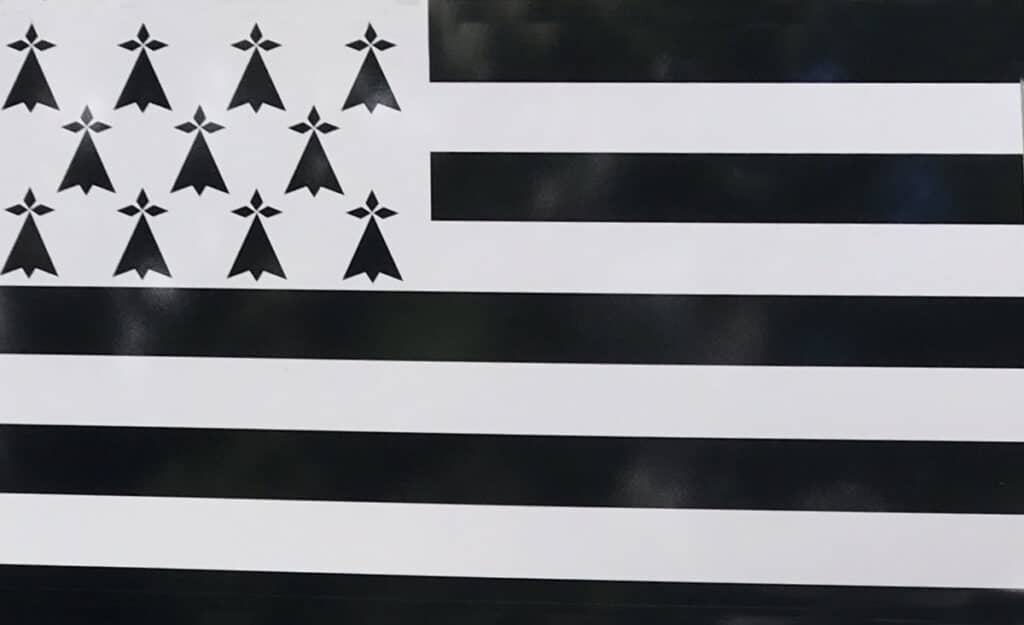
It was designed in 1923 by Morvan Marchal, an activist in the Breton movement for liberty and independence, who was inspired by the American flag and the flags of the age-old rulers of Brittany.
4. People used to speak a language called Breton.
In the Brittany, many locals are trying to preserve the historic Breton language from being overtaken by the dominant French language. It derives from the Common Brittonic language that was spoken throughout Great Britain during the Iron Age and Roman period.
In 1950 there were 1 million Breton language speakers in Brittany, although that has now fallen to around 200k. Bilingual schools have been set up to encourage new generations.
5. Key figures
Here are key facts and figures about Bretagne:
- Population: 4.8 million inhabitants
- Area: 13,136 square miles (34,023 km2)
- Coastline: 1700 miles (2735 km)
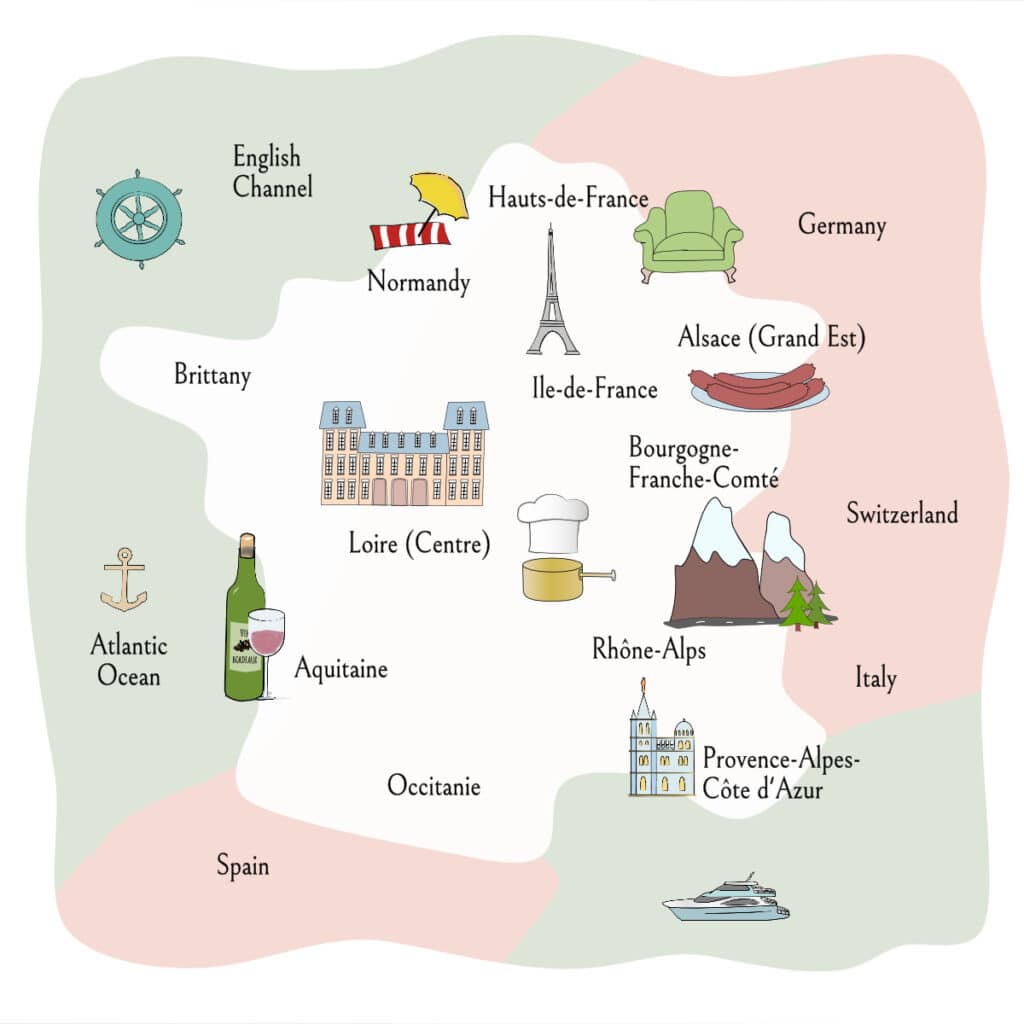
6. Its capital city is Rennes.
Historically, Brittany has had several capital cities such as Dinan, Ploërmel, Redon, Vitré, Guérande, etc. The 3 biggest were Vannes (where they met 19 times), Nantes (17 times) and Rennes.
The Duchy of Brittany and the government were very mobile as each dynasty favoured its own castles and estates, depending on the conflict of the day. Today the city of Rennes is the official capital.
7. It is famous for its Breton shirt.
The symbolic image of a French person usually includes a Breton shirt (marinière) and a beret. It is a traditional long-sleeved sweater which has deep blue and white stripes.
It was usually worn by navy sailers and seamen in Brittany, which as a long-seafaring tradition. Today it is a staple of civilian French fashion.
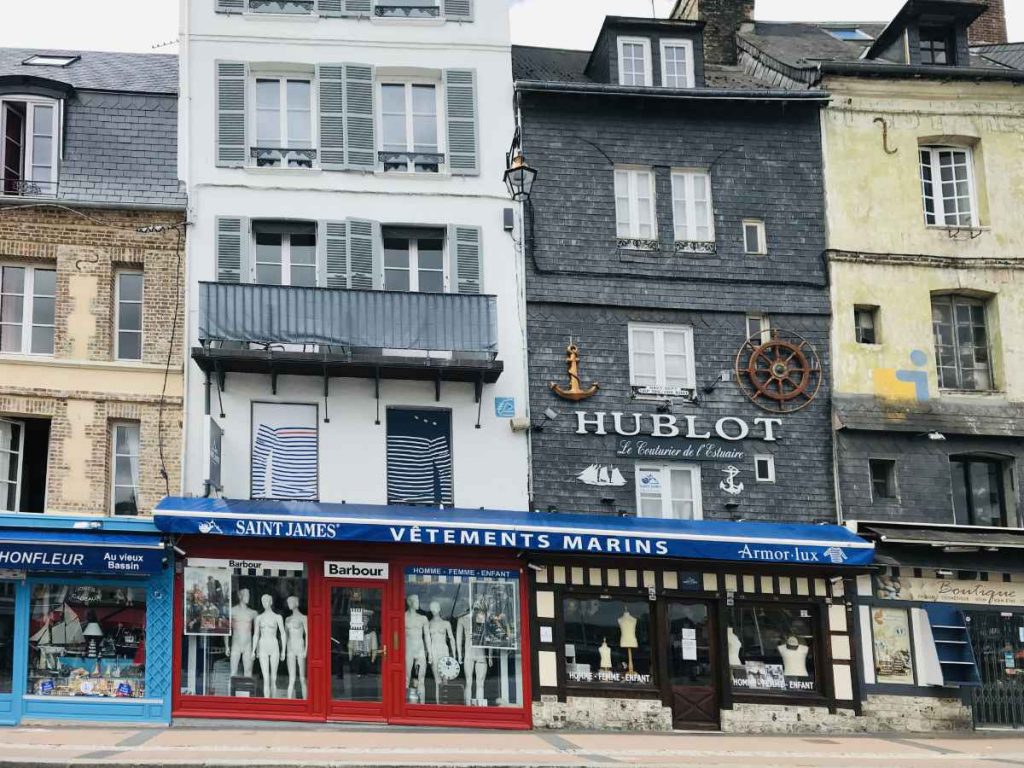
The fashion sprung from that doyenne of luxury French fashion, Coco Chanel. During the First World War, Chanel regularly took seaside holidays and was inspired by the local sailors’ uniforms.
8. It still celebrates Halloween.
Halloween has never been widely celebrated in France, but in Brittany especially it is regaining in popularity.
It comes from the Celtic Pagan celebration of “Samhain” or “gouel kalan-gouiañv” to mark the new year and the brief return of those who have passed.
In the 19th century, the young Bretons used to carve faces on turnips or beets at the time of All Saints’ Day, although these days pumpkins are used following the anglophone influence.
9. It is in the shape of a peninsula.
The region of Brittany is in the shape of a peninsula, i.e. a piece of land bordered by water on three of its sides. Most of its coastline is on the English Channel (“La Manche” in French).
10. Its coastline has the world’s 2nd largest tidal range.
In parts of Brittany like Saint Malo, the tidal range between high tide and low tide is 14 metres or the equivalent of a four-storey building.
When the tide is out, vast sandy beaches appear for the pleasure of tourists and holiday-makers. But when the tide comes in, fortress walls several meters high are required in many coastal cities to protect seafront buildings from damage.
On a scale of 20 to 120, the tidal coefficients here regularly reach 110, making for quite an impressive sight.
11. It has a lot of seafood delicacies.
Brittany is known for its many local delicacies, with a particular love for oysters and mussels.
The town of Cancale is known as Brittany’s oyster capital, because there is a particular plankton that grows in the bay, feeding the oysters leading to a high quality of production that has become renowned all over France.

Fresh oysters are not usually cooked in France, but served as is, fresh from the ocean, with a bit of lemon. (Fresh oysters are a must-have in France for Christmas.)
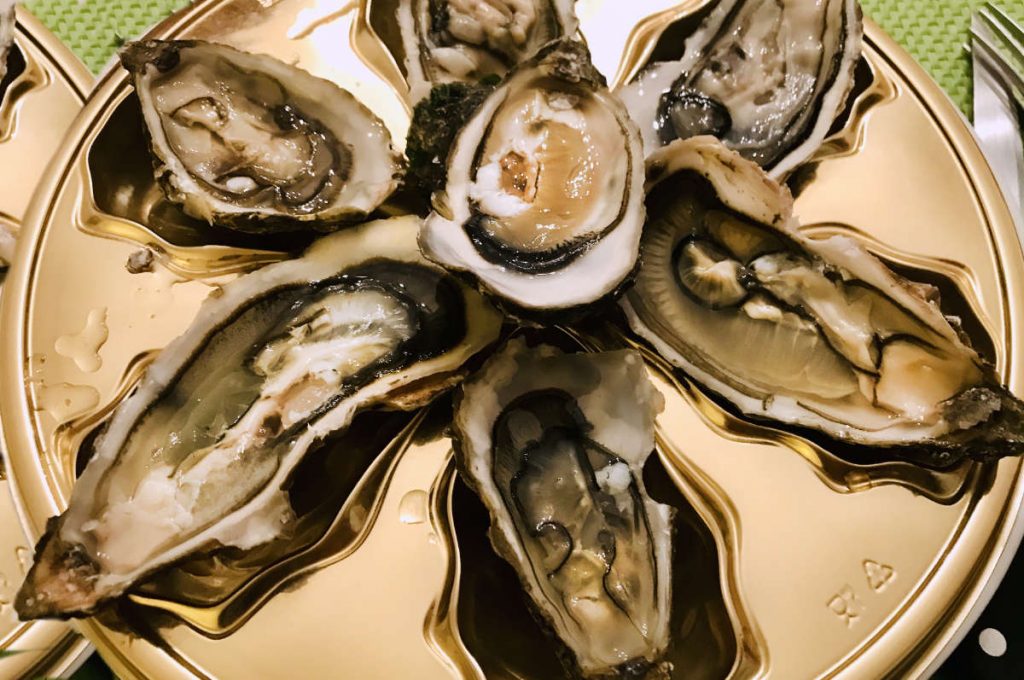
12. Some Breton nobles helped William, the Duke of Normandy, conquer England.
Before William the Conqueror took on Anglo-Saxon King Harold, he waged a battle against the Duke of Brittany (which is right next to Normandy).
William won and the battle is recalled in the Bayeux Tapestry. Some of the Breton nobles would be a powerful allies helping William the Conqueror, the Duke of Normandy to invade England. Many nobles were awarded lands in Brittany, as a result of William’s victories.
13. Anne of Bretagne was twice crowned Queen of France.
In 1491, Anne de Bretagne was the heiress daughter of Duke François II of Bretagne, and his only heir to reach adulthood. She and her lands were so coveted, that King Charles VIII of France (and his army) insisted that she marry him instead.
In order to save the city of Rennes which was under siege, she acquiesced. And thus the duchy of Brittany became part of France.
Her husband King Charles VIII would not last long however. None of their children survived early childhood, and when the king died in 1498, the throne went to his cousin, King Louis XII.
Following an agreement made to secure the annexation of Brittany by France, Anne had to marry the new king, making her twice the Queen of France.
Throughout her life Anne de Bretagne fought for the rights of Bretons, as its citizens were called. To this day the region of Brittany considers itself a separate entity, paying her tribute.
14. It was forced to join France in 1532.
Anne de Bretagne died in 1514 without a male heir. The French throne and the Duchy of Brittany was inherited by a cousin, King Francois I who was married to Anne’s daughter. He formally united the two crowns was in 1532.
King François I also banned the use of all regional languages like Breton and insisted on a new language he called “françoys” (aka French)
15. Several pirates’ dens used to operate from the coastline of Brittany.
The area around the Brittany coast was also famous for being a pirates’ den. It was the era of the high seas, and merchant ships from neighboring England, Spain, and the Netherlands were fair game in this war of attrition. The region became wealthy as its pirates and sailors brought back wealth from their travels.
16. Jacques Cartier set sail to the new world from here.
On April 20, 1534, French explorer Jacques Cartier set sail from his hometown of Saint-Malo in Brittany under a commission from King François I. He would make several trips to the area for François I.
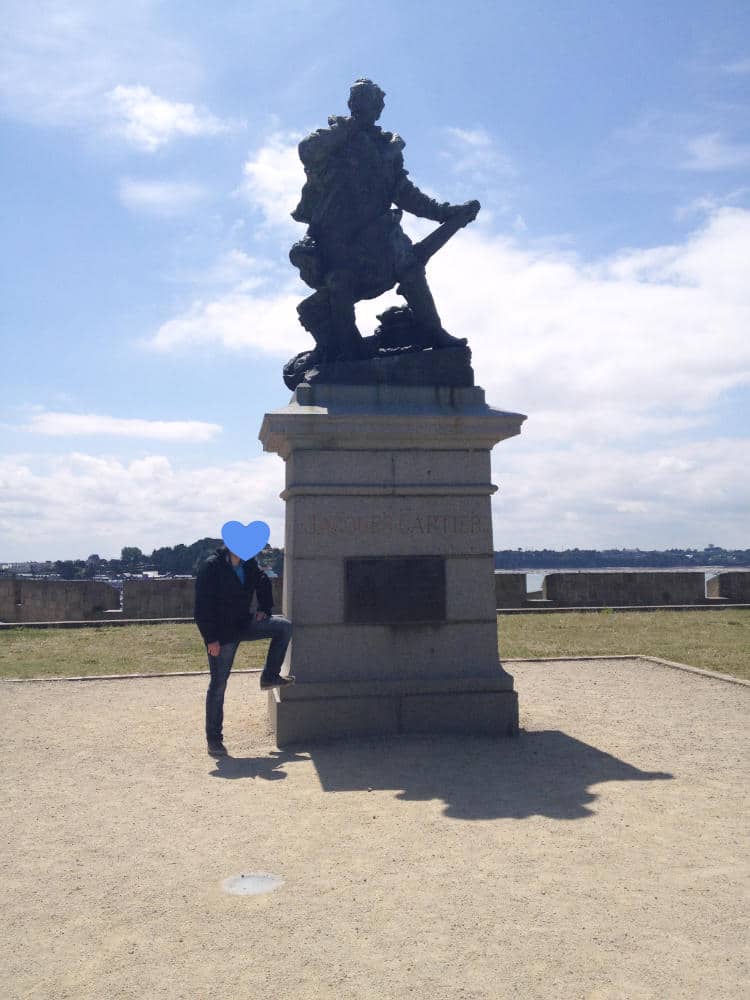
It was the start of the French colonial expansion, and settlement of lands in the Americas.
17. In France, it is notorious for its windy and rainy weather.
For local in France, Brittany is land of the résidence secondaire (vacation homes) and also fast-changing weather. It can rain here several times a day, and it is probably a good idea to carry a light jacket.
18. It had its own parliament until 1789.
The Parliament of Brittany had been established in 1485 by Duke François II of Brittany, the father of Anne de Bretagne, providing a direct link to the fight for independence.
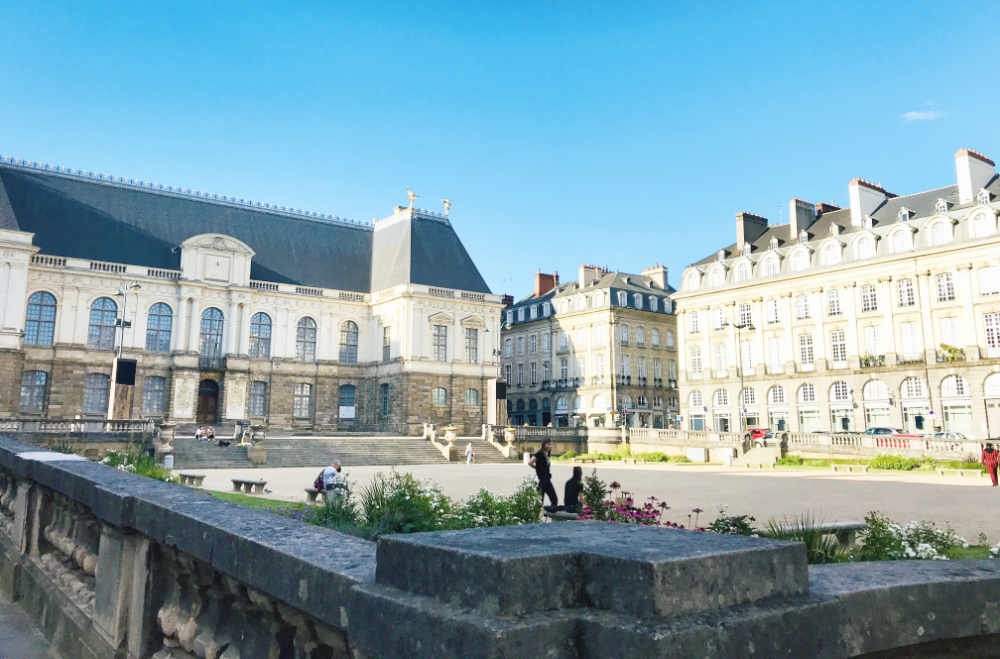
After the 1789 French revolution, the Bretagne Parliament was dissolved by the French National Assembly but famously never ratified by the Parlement itself.
The Parliament of Brittany met on the same day for the final time in protest, to declare the decision “null and void forever”.
19. The Bretons consider Mont Saint Michel to be part of Brittany.
Mont Saint Michel is one of France’s most popular tourist attractions which receives millions of visitors every year.
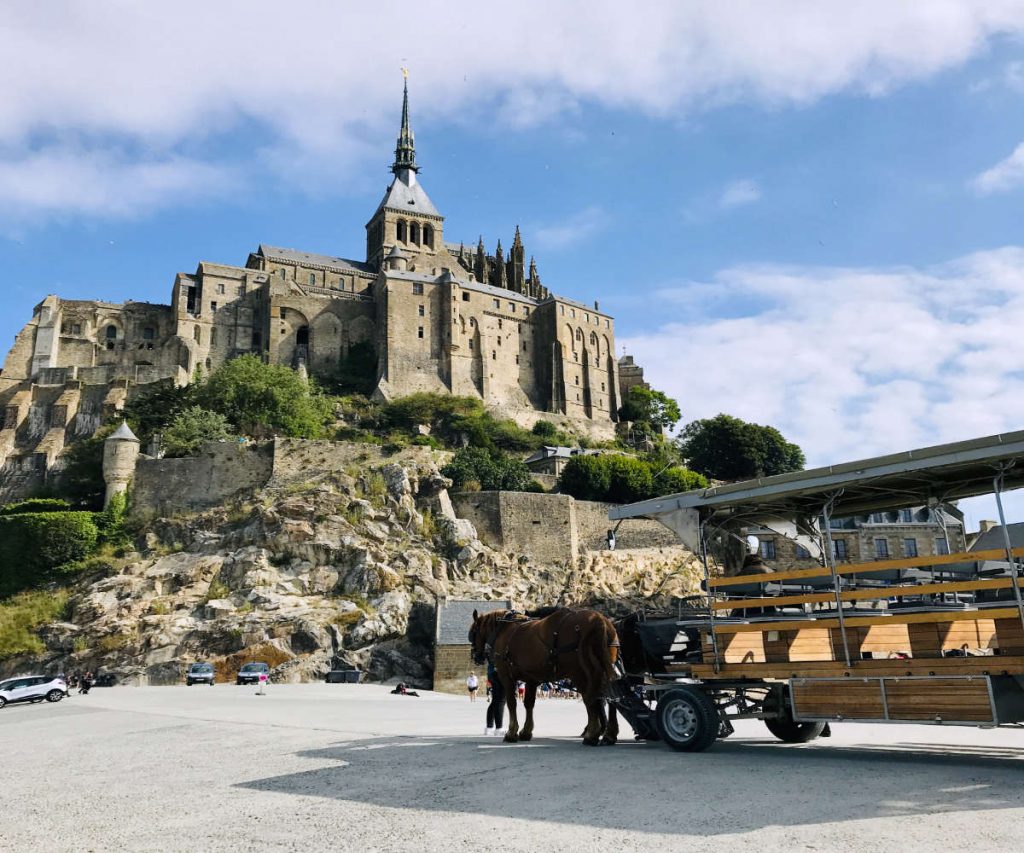
It is a medieval monastery perched on a giant rock in between the coast of Brittany and Normandy. Both regions have laid claim, and for the moment, the town is deemed to be in Normandy, much to the annoyance of local Bretons.
20. The largest city is Nantes.
While Rennes may be the capital of Brittany, in recent years it is Nantes that has seen a surge in popularity. Rennes has a population of around 220,000 while Nantes is closer to 315,000.
Nantes’ location on mouth of the Loire River and proximity to the English coast has lead to a slew of businesses and their personnel moving to the area.
21. It is known for its crêpes, called galette bretonne.
In Bretagne, the crêpes follow a slightly different recipe than the French ones, and hence are called galette bretonne.
The galette bretonne dough consists only of buckwheat flour, water and salt, while a traditional crêpe can contain both flours (65% buckwheat and 35% wheat), water, and sometimes milk and eggs.

Either way, like crêpes, the galette bretonne is a blank canvas that can be filled with almost any ingredient you want. Savory crêpes can have traditional toppings are ham, eggs and cheese, but you can get other ingredients like spinach, mushrooms, etc.
And sweet versions can have anything from fruit, chocolate, compote, honey, and more.
22. There are 5 large islands off its coast.
The region of Brittany includes 5 larger islands off of its coast, along with a series of smaller ones. The main islands include:
- Île de Ouessant (Ushant) – around 900 inhabitants and indigenous black sheep
- Île-de-Bréhat – two small car-free islands that are joined by a bridge at low tide.
- Belle-Île – site of a 16th-century citadel fortified by Vauban.
- Île de Sein – treeless island
- Île de Groix – beaches and vacation homes
23. Brest is the westernmost port of France.
The Breton city of Brest is the westernmost port of France on the English Channel. It is only 160 miles away from Plymouth, UK (as the crow flies) but 375 miles away from Paris.
24. “King Arthur” may be inspired from a legend of Brittany.
Legend has it that Paimpont Forest in Brittany (also known as Brocéliande Forest) and its nearby Château de Comper are the inspiration for the tale of King Arthur.
The tales of the tomb of Merlin and the sword-wedged-in-stone may be derived from local stories from Bretagne, eventually taking on a life of their own.
25. Street signs in Brittany are often translated into Breton.
The local people in Brittany are very attached to their language, and street signs are often translated into both French and Breton languages.
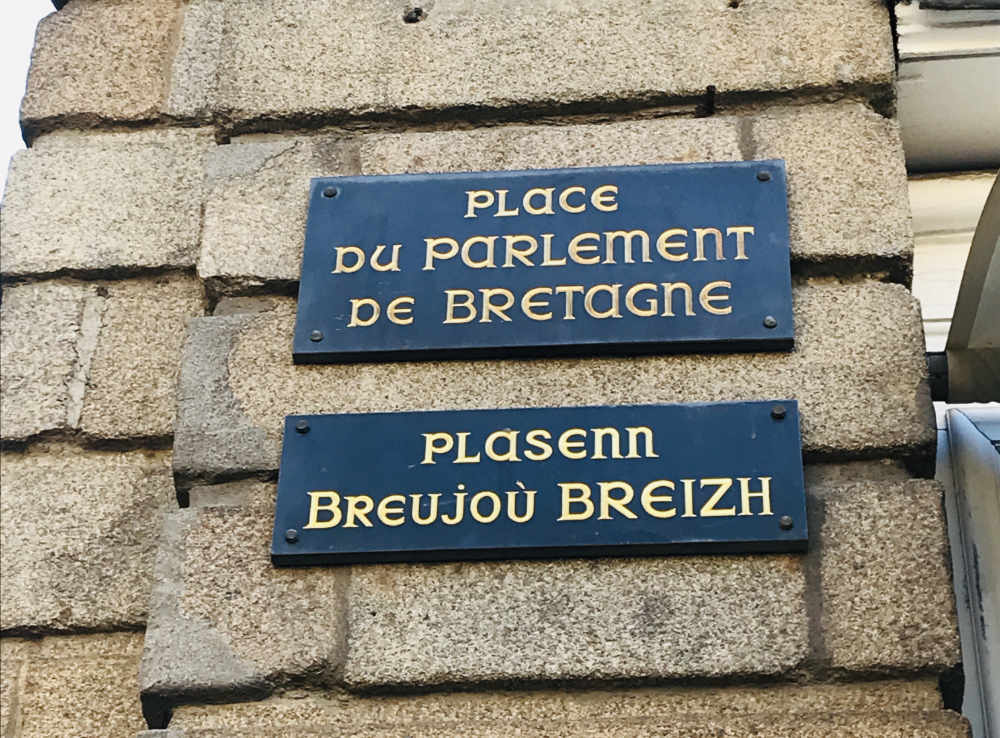
26. Many Bretons crossed the Atlantic to support the American War of Independence.
At the time of the American War of Independence, France was still a monarchy with the English being a sworn enemy.
To support the American rebels, the French sent several thousand troops and sailors. The port of Brest was the largest military harbor in France at the time and many sailors of the French fleet were of Breton origin.
27. The city of Quimper in Brittany helped finance the Statue of Liberty.
On May 30, 1876 the Municipal Council of Quimper voted a subsidy of 100 gold francs to help pay for a gift for the 100th anniversary of American independence.
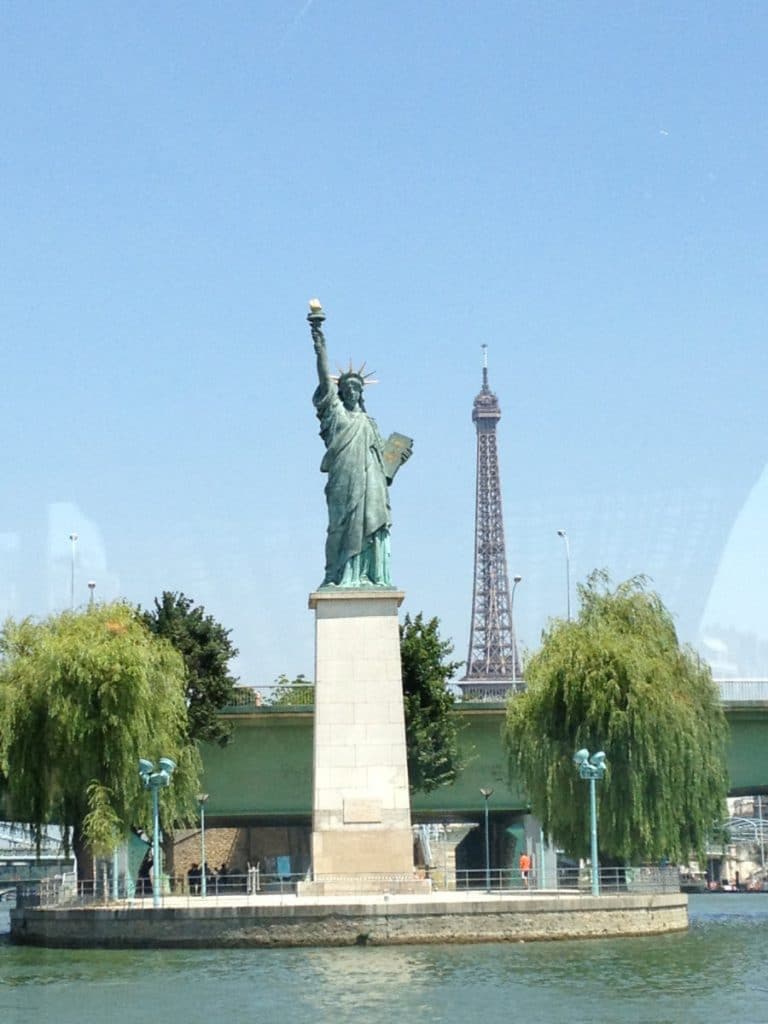
That new gift would be the “Statue of Liberty”, and there are several smaller statues of liberty around France.
28. The Festival Interceltique attracts many visitors every year.
A festival celebrating Celtic heritage is held annually in the city of Lorient in Brittany, France. Called the Festival Interceltique, it was established in 1971 and runs for around 8-9 days in August.
It attracts over 700,000 festival-goers from all over Europe, with Celtic music and marching bands on feature.
29. Unlike other regions of France, Brittany is not known for its wines or cheeses.
While France is reputed for its over 1600 French cheeses and hundreds of high-end wines, the Brittany region is actually not that well known for either delicacy.
30. Breton’s bonnets rouge have a long history of protest.
Local people from Brittany have always used a type of close-fitting knitted cap when protesting, which led to the name “bonnets rouge”. It became popular during the French revolution, and is inspired by the symbol Marianne known for wearing a red Phrygian cap.
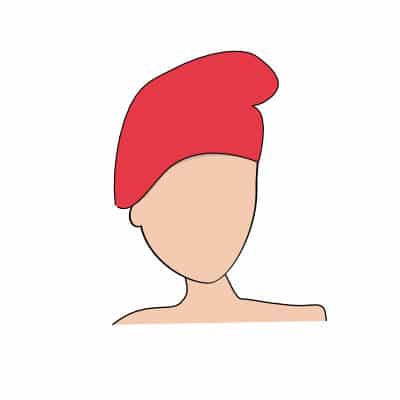
More recently in 2013, the Bonnets Rouges movement from Brittanny led significant protests to Paris to protest a tax on truck transport.
31. It has a nationalist movement seeking independence from France.
The region of Brittany continues to have a nationalist movement, with the Breton flag, language and culture proudly displayed in a quest for liberty.

If you enjoyed that article, you may like to read more facts about France. A bientôt!
